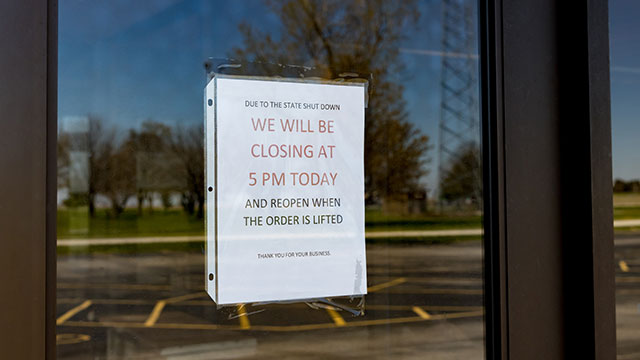The number of fatal opioid overdoses in Cook County spiked 25.6% during Illinois’ first 11-week COVID-19 stay-at-home order last spring, according to a new Northwestern Medicine study published today, April 23, in JAMA Insights.
“People could be staying at home and using alone, which limits the possibility that a bystander can call 911 or give naloxone to reverse the overdose,” said corresponding author Maryann Mason, associate professor of emergency medicine at Northwestern University Feinberg School of Medicine.
In the weeks following the first stay-at-home order, there was an increase in the proportion of overdose deaths involving illegally made fentanyl, a synthetic drug that gives users a euphoric high similar to heroin but 10 times stronger, the study found.
“There has been a disruption in the drug market associated with COVID, so if people aren’t able to purchase from their usual supplier, they have to go to new people and possibly take new substances that are too powerful for them,” Mason said.
These findings build upon Mason’s previous research, which was published March 12 in the journal Morbidity and Mortality Weekly Report.
Average weekly deaths rose 25.6% during stay-at-home order
Illinois enacted its stay-at-home order March 21, 2020 and lifted it May 30, 2020. The study found:
- In the 15 weeks leading up to the stay-at-home period (beginning in December 2019), the average number of weekly fatal opioid overdoses increased from 23 to 35.1
- During the 11-week stay-at-home period, the average number of weekly overdose deaths increased 25.6%, from 35.1 to 44.1
- In the 29 weeks after the stay-at-home order was lifted, the average weekly deaths sharply declined and then began to increase toward the end of the period at 32.7 deaths
Although deaths have declined below the peak weekly numbers seen during the stay-at-home period, opioid overdose deaths following the stay-at-home period remain elevated above pre-2020 levels, the study reports.
“This is concerning because it might indicate an overall persistent upward trend in overdose deaths,” Mason said.
Breakdown of overdose deaths by drug type
The proportion of deaths with fentanyl present spiked from 73.9% in 2018-2019 to 81.9% in the 29 weeks following the COVID-19 stay-at-home period (June 6, 2020 to December 23, 2020).
“There’s now a demand for fentanyl because people like the high it gives them, and so they seek it out,” Mason said. “It’s something you can develop a tolerance to.”
But for someone who has never before used fentanyl, even a very small amount – equal to that of a grain of sand – could kill them if it is unknowingly mixed with another drug, Mason said.
There was a steady decrease in the proportion of deaths with heroin present, from 53.7% of deaths in 2018-2019 to 32.2% of deaths between June 6, 2020 and December 23, 2020.
One possible explanation for the decrease in heroin-involved deaths, Mason said, is that it is now more difficult to obtain heroin because of interruptions in the usual supply distribution methods due to COVID restrictions. Another possible explanation, she said, is there is less demand because people have become accustomed to the stronger fentanyl and now desire it.
“The findings help us understand the relatively greater risks of the pandemic for people who use opioids, the need to support people with opioid misuse during these times and the ‘collateral’ damage of a pandemic beyond COVID deaths,” Mason said.

Overdose prevention strategies
The State of Illinois has current opioid crisis response grants in place, which help fund efforts to provide more overdose prevention strategies for opioid users, Mason said. The Illinois House is currently reviewing HB110, which provides legal protection and enables creation of a formal process for overdose prevention sites.
Also, groups like The Chicago Recovery Alliance (CRA), a non-profit organization that provides syringe exchange and overdose prevention services to Chicagoans, provides real-time drug checking using spectrometer machines and fentanyl test strips. These help identify if heroin, pills, methamphetamine, cocaine, MDMA or other drugs have been adulterated with fentanyl. Combined with substance use management counseling, drug checking can prevent overdoses.
“We all know people who have this problem that we never would have guessed,” Mason said. “To some extent, we have to do what we can to improve the safety of the drug supply.”
How the study worked
The study analyzed data from the Cook County medical examiner’s office to look at overdoses before, during and after the stay-at-home order in Cook County. The number of weekly deaths were calculated for the weeks between January 5, 2018 and December 23, 2020. A total of 4,283 opioid overdose fatalities occurred in Cook County in that time, with the weekly count of deaths ranging from 12 to 53.
Other Northwestern co-authors include Joseph Feinglass and Dr. Ponni Arunkumar.


